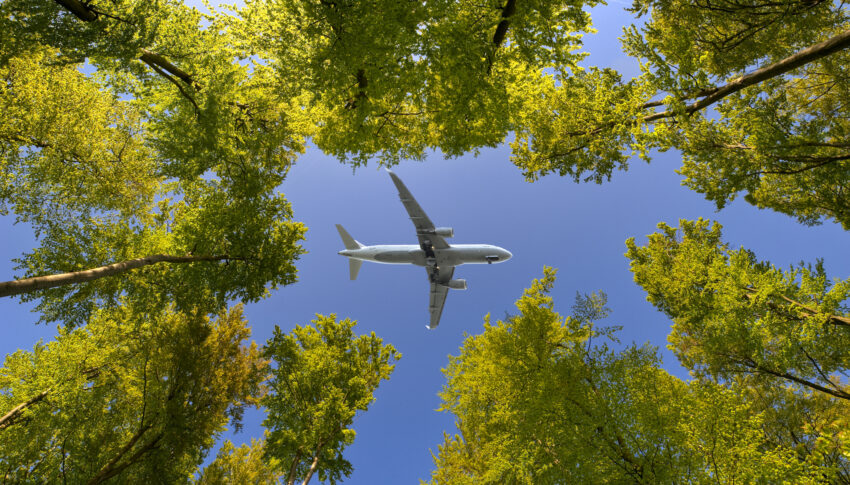Carbon offsetting is the most controversial part of net zero and the carbon transition across industries, including aviation. Early offsetting measures, which were mostly voluntary, have seen substantial criticism on effectiveness and practicality grounds. Meanwhile, the acceleration towards net zero during the COVID-19 pandemic has resulted in many promises but few details. So what is offsetting all about, and what are its critiques? We dive deep in the latest of our ab initio guides.
At its most basic, carbon offsetting involves paying for a carbon-reducing activity to take place in order to offset a carbon-producing activity. This might be funding a tree-planting effort, or a renewable energy farm, among many examples.
But as industries grapple with carbon accounting, precisely how many trees need to be planted for — say — a single flight? And who should pay? Pre-pandemic, mostly voluntary offsetting saw weak takeup and much criticism.
The Air Transport Action Group, in a fact sheet on voluntary carbon offsetting, highlighted that pre-pandemic takeup of voluntary carbon offsetting by passengers was between 1–3 percent.
“Some airlines,” ATAG then noted, were “seeing higher levels of uptake, typically linked to improved visibility of the offset functionality and ease of use within the airline booking process, perceived project quality, cultural environmental consciousness and other factors that attract passengers to make that investment.”
Indeed, a UK government consultation on offsetting showed wide skepticism around offsetting, especially where it was used instead of making adequate emissions cuts in activities.
The effectiveness of these measures was widely criticised pre-pandemic, with European pressure group Transport & Environment calling them “a distraction from policies that can actually reduce emissions”.
Critiques are not just pointy-headed carbon economist stuff any more. As just one example, the hit news satire show Last Week Tonight with John Oliver spent nearly half an hour discussing offsetting in August.
Programmes backed by the United Nations or credible national governments are seen as among the most reliable, for example the British Columbia Offset Program or the American Carbon Registry. Non-governmental offsetting such as VERRA’s Verified Carbon Standard is also an option, where in-house and independent third-party auditing, credible accounting methodologies and a trustworthy register system are all key to confidence in an offsetter. But none of these register programmes have escaped criticism.
A key critique of any offsetting measure is additionality, the question of whether or not a carbon-reduction action would have taken place anyway, and where precisely any pre-offsetting baseline for an offset project would sit.
Another is permanence: how long will carbon captured remain captured? What is the lifespan of an offset, and how can, say, protecting a mangrove swamp compare with building wind power?
Yet another, and a critical one, is the use of offsets to reduce the incentive to make changes. It seems like many companies are throwing money at offsets — and sometimes questionable ones — to avoid decarbonising those parts of their businesses that can be decarbonised.
Here, new standards are highlighting the scope of work needed. The Science Based Targets Initiative’s Net-Zero Standard requires “rapid, deep emission cuts” across all three scopes of activity: “their own processes (scope 1), purchased electricity and heat (scope 2), and generated by suppliers and end-users (scope 3).”
“Most companies,” the SBTI notes, “will require deep decarbonisation of 90–95 percent to reach net-zero under the Standard.”
In the aviation context, the European Destination 2050 plan includes offsetting under its “economic measures” section, which largely discusses offsetting in the context of carbon pricing, emission trading and the EU Emissions Trading Scheme.
Destination 2050 relies on all of these measures together for 8 percent of its net zero commitment, with a further 2 percent coming from the effect of those measures on demand — in essence, relying on the higher pricing to deter price-sensitive people from flying or flying as much.
That figure can stand only, of course, if all the other measures that aviation is taking to decarbonise are successful. While it’s clear that verified, trustworthy offsetting has a role in the future, aviation needs to drive offsetting towards that verified trustworthiness — and to continue its efforts to decarbonise elsewhere.
Author: John Walton
Published: 22nd September 2022




